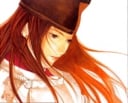Okay - installed and working under kubuntu 7.10. To answer your question, I use jpg when I don't care about quality and lossless tiff when I do.
The new framestore is great... thanks! Pretty much what I had in mind. I'll have to get used to it being manual, but I can see the value of that. I've worked with image playback tools in the past that always automatically kept the previous image in a buffer, so that you could toggle when you hit reload. With the manual approach, you have to *remember* to load the buffer when you reload, but I think I prefer that anyway.
Another issue: I typically save my files in 4-digit padded format (filename.%04d.tif), and I notice that djv_ls thinks there's a break between frame 999 and frame 1000. Likewise, if I have 'Automatically open file sequences' set in preferences, it only loads a sub-framerange (e.g., f0000-0999 if I give a frame between those numbers, even if there are more frames above 999).
For example, say I have 1500 frames in a directory:
clipper.0100-0999.jpg 33.1MB root Seq rwx Sat Dec 22 17:28:55 2007
clipper.1000-1599.jpg 21.68MB root Seq rwx Sat Dec 22 17:29:06 2007
If I force djv_view to load the full range (djv_view clipper.0100-1599.jpg), then it plays them all.
cheers
Mark
The new framestore is great... thanks! Pretty much what I had in mind. I'll have to get used to it being manual, but I can see the value of that. I've worked with image playback tools in the past that always automatically kept the previous image in a buffer, so that you could toggle when you hit reload. With the manual approach, you have to *remember* to load the buffer when you reload, but I think I prefer that anyway.
Another issue: I typically save my files in 4-digit padded format (filename.%04d.tif), and I notice that djv_ls thinks there's a break between frame 999 and frame 1000. Likewise, if I have 'Automatically open file sequences' set in preferences, it only loads a sub-framerange (e.g., f0000-0999 if I give a frame between those numbers, even if there are more frames above 999).
For example, say I have 1500 frames in a directory:
clipper.0100-0999.jpg 33.1MB root Seq rwx Sat Dec 22 17:28:55 2007
clipper.1000-1599.jpg 21.68MB root Seq rwx Sat Dec 22 17:29:06 2007
If I force djv_view to load the full range (djv_view clipper.0100-1599.jpg), then it plays them all.
cheers
Mark



 )
)






